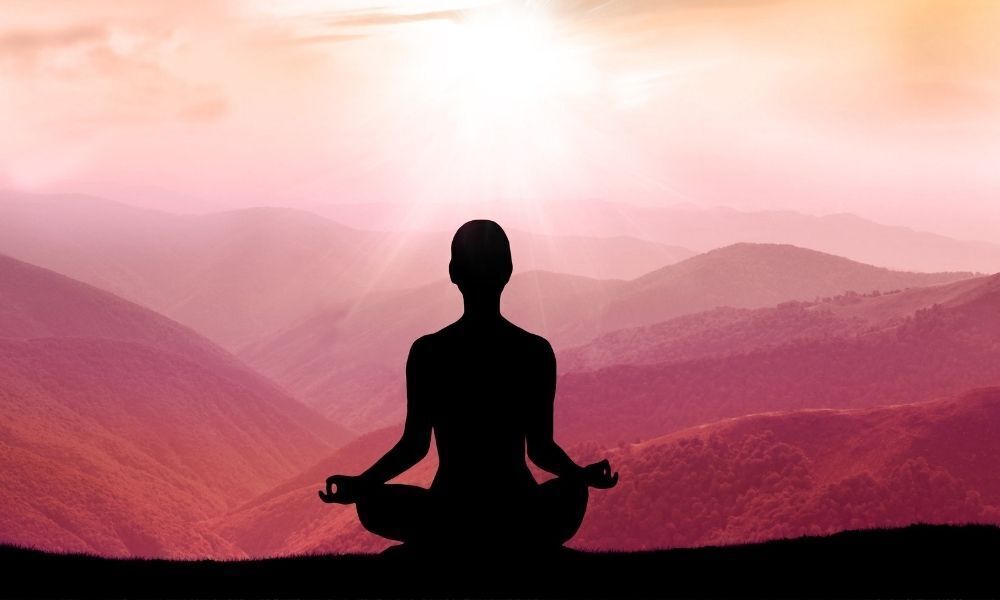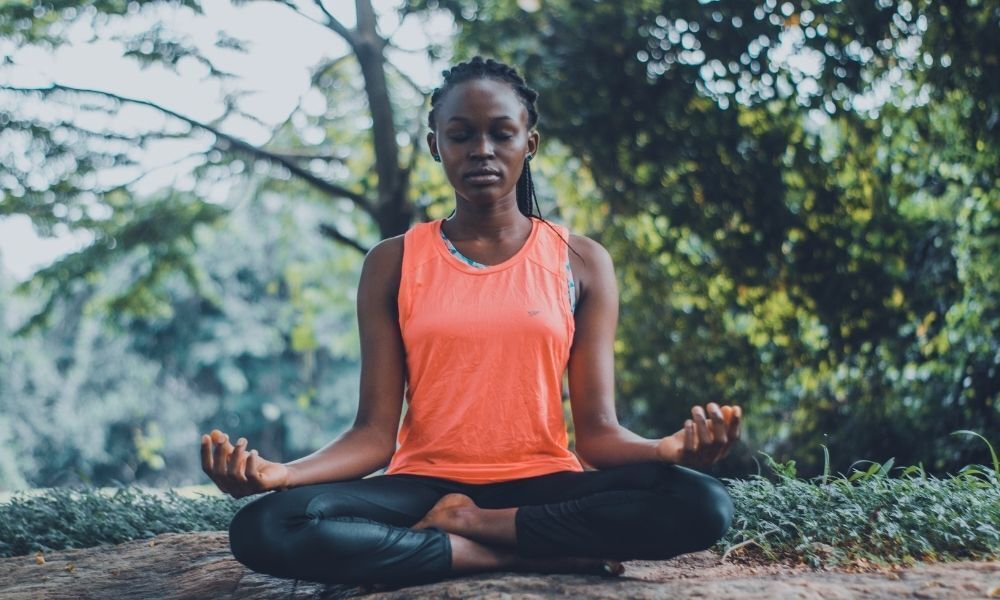Table of contents
General Considerations About Vipassana Meditation

Vipassana Meditation is a tool for self-transformation, based on self-observation and connection of body and mind. Considered one of the oldest meditation techniques in India, it was taught by Siddhartha Gautama, Buddha, over 2,500 years ago with the aim of seeing the world from the inside and being able to see things as they really are.
In this way, it has become a means of purifying the mind through awareness and attention, relieving suffering for those who can practice it frequently. Want to know more about this important practice of inner transformation? Read the article until the end and discover the wonders of this technique.
Vipassana Meditation, origins and foundations

Many times, we are unable to accept certain events and create a resistance to situations that we don't have the power to control. By trying to resist and avoid suffering, we end up suffering even more.
Vipassana Meditation helps us to remain calm and serene, even in difficult times. Below is more about the technique, as well as its origins and foundations.
What is Vipassana Meditation?
Vipassana in Buddhist translation means "seeing things as they really are". It has become a universal remedy for universal problems, because those who practice it are able to have insights that help in self-knowledge and relief from suffering.
Vipassana Meditation can be developed in different ways through contemplation, introspection, observation of sensations, analytical observation, but always with much attention and concentration, as these are the pillars of the method.
The practice is linked to Buddhism, in the preservation of Buddha's original teachings. By concentrating, we empty our mind and the cleaner it is, the more we understand what is happening around us and within us. Therefore, the happier we become.
The Origins of Vipassana Meditation
We can say that the practice of Vipassana Meditation had greater emphasis after the initial development of Buddhism. Buddha, with his teachings and the goal of helping in the search for spiritual enlightenment, contributed to the expansion of this technique. However, many thought of the practice as meditation in the general sense, without considering their individuality. Over time, this has changed.
Contemporary scholars have delved deeper into the subject and today pass the teachings on to their students, with explanations that make them understand the power of Vipassana Meditation in our mind and in our relationship with ourselves and the outside world. Thus, the cycle of the practice is renewed and, over the years, more and more people can benefit from its effects.
The Basics of Vipassana Meditation
A holy book of Theravada Buddhism called the Sutta Pitaka (which in Páli means "basket of discourses") describes the teachings of the Buddha and his disciples on Vipassana Meditation. We can consider the rationale for vipassana to be "the attachment that generates suffering.
Attachment, whether to material or not, takes us away from the present moment and generates feelings of anguish and anxiety in an attempt to control events. The focus, concentration and full attention that the practice of Vipassana Meditation provides bring us to the present moment and relieve suffering, dissolving the thoughts that generate anxiety. The more we practice, the more we can feelits benefits.
How to do and the steps of Vipassana Meditation

Vipassana Meditation can be done by any healthy person and of any religion. It is very important that the practice is done in a quiet environment, so that it is easier to have a good concentration. See below for more details on how to do Vipassana Meditation and the steps of this technique.
How to do Vipassana Meditation
Ideally, you should sit in a comfortable position, with your back straight, eyes closed and your chin aligned with the floor. Try to relax and concentrate on your breathing. Breathe through your nose and watch the air coming out. As you breathe in and out, experts suggest counting to 10, alternating between movements.
The count is intended to help maintain attention and guide the process. When you finish the count, repeat the action. For 15 to 20 minutes a day, we can already perceive the benefits of the practice. There are 10-day courses in which the teaching of the technique is deepened. These courses require serious and hard work in a three-step training.
The first step
The first step consists of a moral and ethical conduct, which aims to calm the mind from possible agitations generated by certain actions or thoughts. During the whole period of the course one should not talk, lie, maintain sexual activity and take intoxicating substances.
Not performing these actions facilitates the process of self-observation and concentration. In this way, we can obtain the benefits with more intensity, enriching the experience of the practice.
The second step
By fixing our attention on the inlet and outlet of air, we gradually develop mastery of the mind. As the days pass, the mind becomes calmer and more focused. In this way, it becomes easier to observe the sensations in our body, allowing a deeper connection with nature, with serenity and an understanding of the natural flow of life.
When we reach this level, we develop non-reaction to events we cannot control, we put ourselves in the observer's place and consequently alleviate our suffering.
The last step
On the last day of the training, participants learn the meditation of love. The objective is to develop the love and purity that everyone has within themselves and extend it to all beings. Feelings of compassion, cooperation and communion are worked on, and the idea is to maintain the mental exercise, even after the course, in order to have a serene and healthy mind.
The Benefits of Vipassana Meditation

When we practice Vipassana Meditation frequently, we can benefit in many ways. By increasing our daily meditation time, we may be able to realize the benefits more easily. See below for what this tool can provide.
Increased productivity
The frequency of the practice facilitates the control of thoughts. Today, most people have a busy day, taken up with countless tasks and problems to solve. Vipassana Meditation empties the mind of unnecessary thoughts and facilitates concentration on the present moment.
With an organized mind and aligned activities, we can manage our time and perform our tasks with more quality. After all, two hours of work with focus and attention are worth more than five hours with distractions and thoughts that can hinder the execution of a certain function.
Silence
Nowadays it is almost impossible to find someone who can remain silent. Usually people are very committed to talk, to expose their opinions almost all the time, having, many times, difficulty to listen with attention.
With meditation, we gain more control over our mental flow, which helps us to actively listen and perceive things more attentively. It may be a little more difficult at first, but as we practice, we naturally achieve this level of control.
Attention
Vipassana Meditation helps us focus our mind to perform one task at a time. Doing too many things at once harms our physical and mental health, and when we can quiet our mind, we control our attention better.
By practicing for ten days straight, it is already possible to notice the benefits on a daily basis and the more we notice the results, the more motivated we become. Therefore, it is worth the dedication to this wonderful technique that helps us in several areas of life.
Self-knowledge
Vipassana Meditation is also a tool for self-knowledge, because with practice, we develop our self-evaluation more intensely, as we become more conscious.
By working on awareness, we more easily realize when our habits are not aligned with our goals and then we get off "autopilot". We are also able to better understand about our limits, tastes and what makes our heart flutter.
Working on self-knowledge is the first step for those who seek evolution, whether in professional or personal life, because only when we acquire responsibility for ourselves can we have new perspectives and thus live a life aligned with who we really are.
Modern Methods of Vipassana Meditation

As time went by, the technique of Vipassana Meditation has been updated, joining tradition with more current studies, but without losing its fundamentals and benefits. Here are some of the most famous modern methods.
Pa Auk Sayadaw
Professor Pa Auk Sayadaw's method is based on the training of observation and the development of mindfulness, as well as on the Buddha's instructions. In this way, Vipassana promotes the growth of the points of concentration, the so-called jhanas. With the practice, insights arise from the observation of the four elements of nature through fluidity, warmth, solidity and movement.
The aim is to discern the characteristics of impermanence (anicca), suffering (dukkha) and non-self (anatta) in the ultimate materiality and mentality - of past, present and future, inner and outer, gross and subtle, lower and higher, far and near. The greater the frequency of the practice, the more insights are generated, advancing the stages of enlightenment.
Mahasi Sayadaw
The main foundation of this method is concentration on the present moment, on the now. Buddhist monk Mahasi Sayadaw's teachings on the practice of his method are characterized by going on long and very intense retreats.
In this technique, to facilitate attention to the present, the practitioner focuses on the up and down movements of the abdomen during breathing. When other sensations and thoughts arise - which is normal, especially for beginners - the ideal is to just observe, without any kind of resistance or self-judgment.
Mahasi Sayadaw assisted in the establishment of meditation centers throughout Burma (his home country), which later spread to other countries as well. The estimated number of people trained in his method is over 700,000, making him a great name in today's methods of Vipassana Meditation.
S N Goenka
Satya Narayan Goenka is known for being one of the greats responsible for bringing Vipassana Meditation to the West. His method is based on breathing and paying attention to all the sensations of the body, clearing the mind and having greater clarity of ourselves and the world.
Although his family was from India, Goenkaji was raised in Burma, and learned the technique from his teacher Sayagyi U Ba Khin. He founded the Vipassana Research Institute in Igatipuri in 1985, and soon after began conducting ten-day immersion retreats.
There are currently 227 Vipassana Meditation centers using his method around the world (with over 120 being permanent centers) in 94 countries, including the USA, Canada, Australia, New Zealand, Japan, the UK, Nepal, and others.
Thai tradition of forests
The Thai forest tradition began around 1900 with Ajahn Mun Bhuridatto, whose goal was to practice the meditative techniques of Buddhist monasticism. This tradition has had a major contribution in including meditation in more modern fields of study.
Initially there was strong opposition to Ajahn Mun's teachings, but by the 1930s his group was recognized as a formal community of Thai Buddhism and as the years went by it gained more credibility, attracting Western students.
In the 1970's there were already meditation groups with Thai orientation spread throughout the West, and all this contribution remains until today, helping in the personal and spiritual development of those who practice it.
By observing reality as it is, by working on our inner self, we experience a truth that is beyond matter and we are able to free ourselves from the impurities of our own mind. May everyone experience the benefits of this wonderful tool and thus be able to follow a much happier path.
Where to practice, courses, venues and Vipassana retreat

Nowadays there are several centers for practicing Vipassana Meditation which offer courses in retreats. Although the technique is based on Buddhist teachings, each teacher has its own particularity.
However, it is important to remember that the principles of meditation will always be the same - conscious perception of the body's sensations - regardless of the teacher who is guiding. See below the ideal places for the practice.
Where to Practice Vipassana Meditation
In Brazil, there is a Vipassana Meditation center located in Miguel Pereira, in the state of Rio de Janeiro. This center has been in existence for a little over 10 years and is in great demand. Anyone who wants to develop inner peace, regardless of religion, can join the meditation centers.
The courses
For those who wish to begin the practice, courses are recommended where the steps for the correct development of Vipassana Meditation are taught in a systematic way, following a method.
Normally the courses are in retreats and the duration is 10 days, but there are places where this time is shorter, because there is no rule that imposes the exact amount of days. In addition, there are no fees for the courses, because the expenses are paid through donations from people who have already participated and wish to give the opportunity for others to benefit as well.
Special courses
Special ten-day courses for executives and civil servants are held periodically at several Vipassana Meditation centers around the world, in order to bring the technique to more and more people and thus help them develop inner peace and enjoy the many benefits of this important tool.
Places
Courses are offered at meditation centers or at places usually rented for this purpose. Each place has its own schedule and dates. The number of Vipassana Meditation centers is very large in India and elsewhere in Asia.
There are also many centers in North America, Latin America, Europe, Australia, New Zealand, the Middle East and Africa.
Vipassana Retreat and What to Expect
At the Vipassana Retreat, the student makes a commitment to dedicate him/herself entirely during the proposed period, remaining there until the end. After days of intense practice, the student can, by him/herself, include the activity in his/her daily life.
To intensify the learning, longer retreats are suggested. This does not mean that a retreat of less than 10 days does not work, but those of 10 days can better develop the habit in those who practice.
What is the main focus of Vipassana Meditation?

The main focus of Vipassana Meditation is on the control and recognition of the breath - as well as the body's sensations - as a way to stabilize the mind. In this way, a state of inner peace is achieved, which helps to alleviate suffering, with the aim of reaching the state of "enlightenment".
Therefore, Vipassana Meditation is an effective tool for attaining and sharing true happiness with others.

